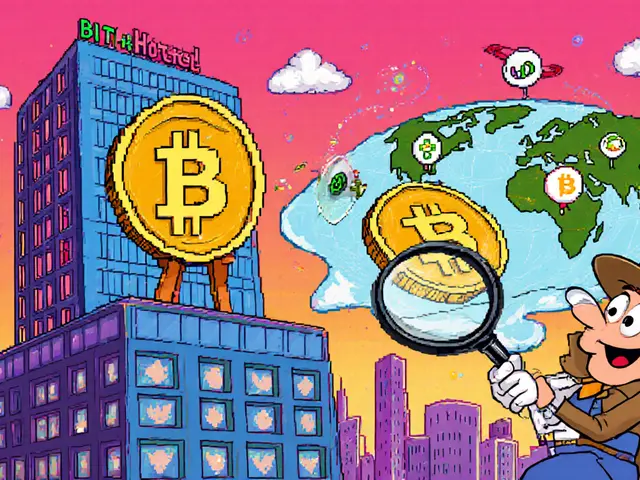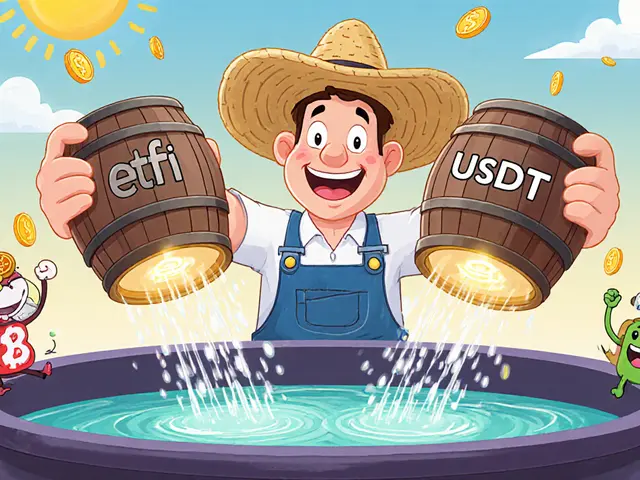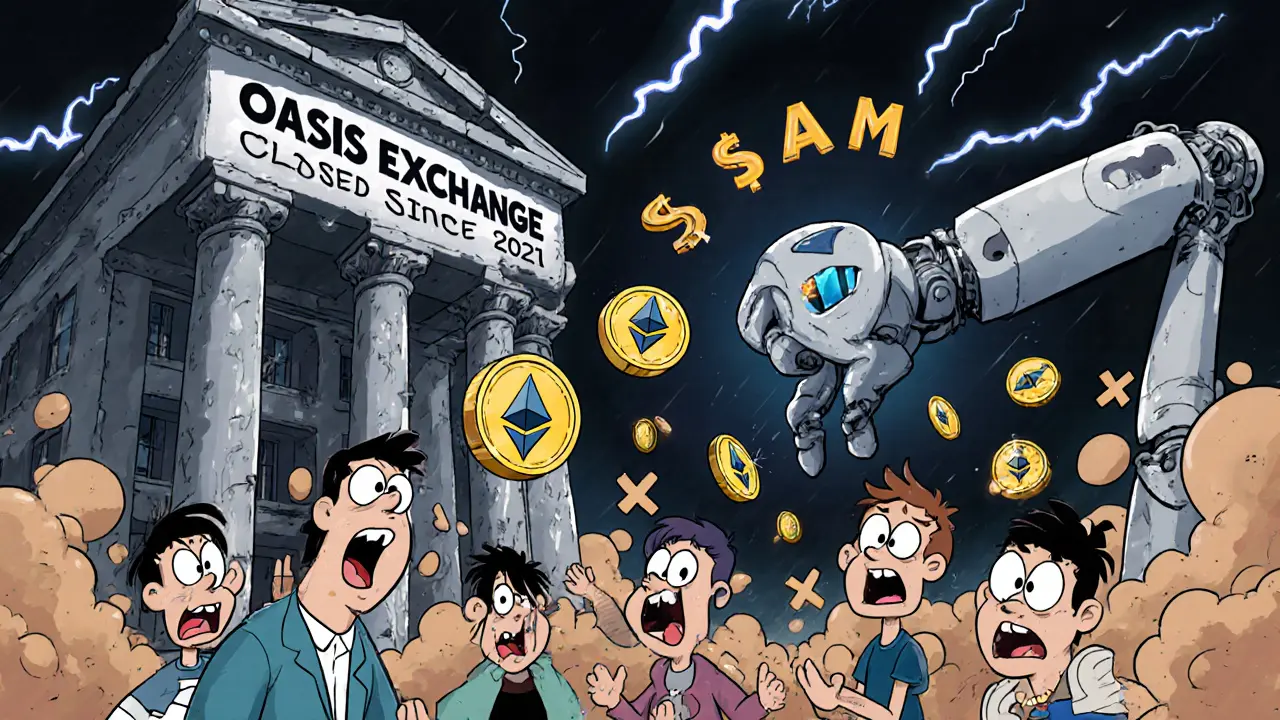
DEX Safety Checker
Check if a DEX is Safe
Enter the name or website of a decentralized exchange to verify its legitimacy and operational status. This tool checks against known fraudulent platforms and provides security recommendations.
This tool checks against known fraudulent platforms and verified active exchanges. Remember: always verify transaction details on blockchain explorers (Etherscan, BscScan) before trading. Learn more about DeFi security best practices
Oasis Swap sounds like it should be a reliable decentralized exchange - especially if you’ve heard of the active Oasis Network. But here’s the truth: Oasis Exchange, the platform you’re searching for, hasn’t operated since late 2021. It’s gone. Dead. Not suspended. Not under maintenance. Not rebranding. It vanished.
Back in early 2021, Oasis Exchange showed up on CoinMarketCap with a 24-hour trading volume of over $1.5 billion. That’s not a typo. It looked like a rising star in the DeFi world. But within seven months, that number dropped to zero. No trades. No liquidity. No users. Just a website that kept loading, pretending everything was fine.
What Was Oasis Exchange?
Oasis Exchange was a decentralized exchange (DEX) launched in 2019 by a South Korean company called Guardian Holdings. It claimed to offer non-custodial trading - meaning you kept your own keys, no KYC, no middleman. That’s the same promise Uniswap and PancakeSwap make today. And for a while, it seemed to deliver.
It supported ERC-20 tokens and worked with Ethereum wallets like MetaMask. No personal info. No bank links. Just connect your wallet and trade. Sounds ideal, right? But here’s the catch: it never solved the biggest problem every DEX faces - keeping liquidity alive.
Why Did Oasis Exchange Die?
There’s no mystery here. Oasis Exchange collapsed because it had no real users, no real traders, and no real incentives.
By February 2021, it claimed $1.5B in daily volume. By September 2021, CoinMarketCap labeled it “Untracked.” That means their systems stopped seeing any real blockchain activity. The numbers were fake. Or worse - they were inflated by bots.
Users started reporting the same problems over and over:
- Trades showed up on the site but never confirmed on the blockchain
- Withdrawals failed - ETH, USDT, you name it - just stuck forever
- Customer support vanished. Discord and Telegram groups went silent
- Wallet integrations broke. MetaMask stopped recognizing Oasis Exchange’s smart contracts
Trustpilot had 17 reviews averaging 1.8 out of 5. Reddit threads from March 2021 are full of users asking, “Is Oasis Exchange a scam?” The answer was yes - not because it stole money outright, but because it pretended to work when it didn’t.
Chainalysis called this a “ghost exchange” - a platform that looks alive on paper but is dead in practice. Oasis Exchange wasn’t hacked. It wasn’t shut down by regulators. It just ran out of money and people. No one was trading. No liquidity providers were adding funds. The whole thing became a hollow shell.
Oasis Exchange vs. Oasis Network: Don’t Get Confused
This is where people make costly mistakes.
Oasis Exchange is dead. But Oasis Network? That’s alive, growing, and backed by real development.
Oasis Network is a Layer 1 blockchain - not an exchange. It has its own token: ROSE. It launched YuzuSwap in late 2021, which is still running today with $5.9 million in daily volume as of Q2 2025. It got a $200 million investment from Binance. It has active GitHub commits, institutional partnerships, and a roadmap through 2030.
They’re completely different projects. Same name. Zero connection. If you’re looking for a working DEX on the Oasis Network, go to YuzuSwap. If you’re searching for Oasis Exchange - walk away. The site doesn’t work. The domain expired in January 2022. The smart contracts are abandoned.
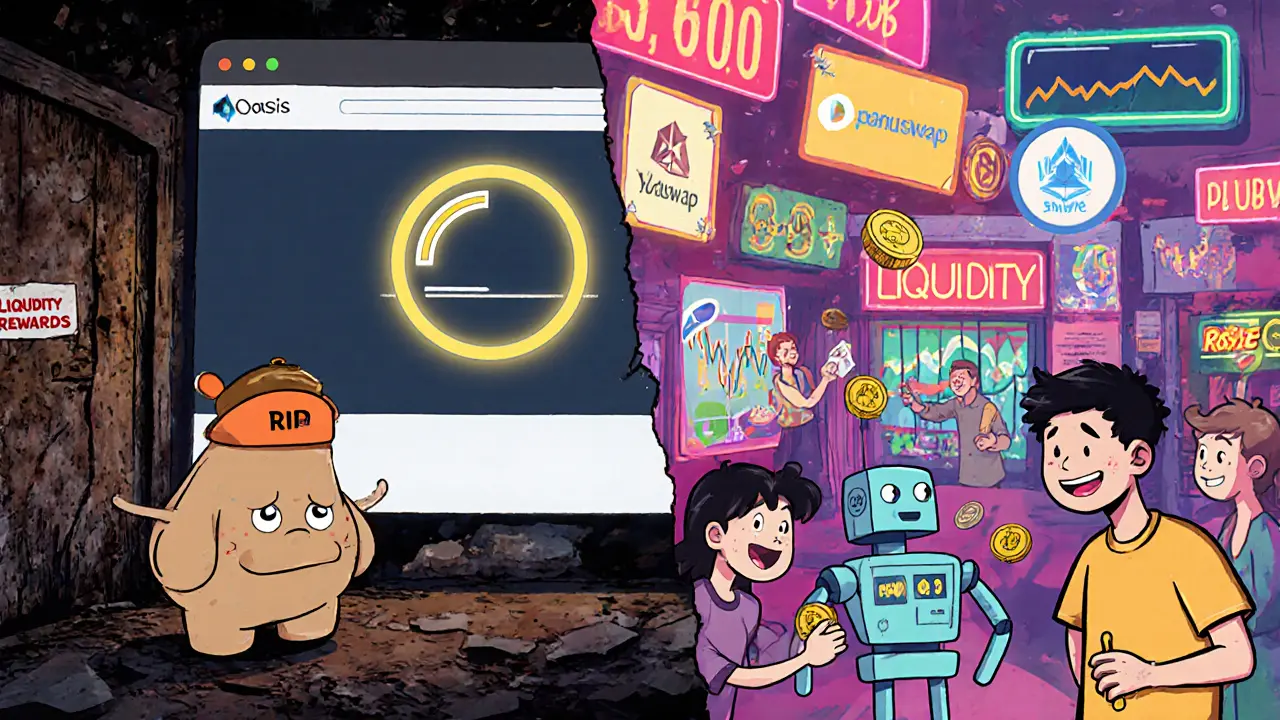
What Happened to the Users?
Thousands of people lost money. Not because they were scammed in a traditional sense - but because they trusted a platform that had no real infrastructure.
One user on Reddit, u/CryptoWatcher89, posted in March 2021: “I deposited 5 ETH. The site says it’s traded. But I can’t withdraw. No response from support.” That was typical.
There were no official refunds. No recovery process. No legal recourse. The company behind it disappeared. No press releases. No social media updates. Just silence.
Even if you had your private keys, the smart contracts stopped responding. You couldn’t move your assets because the code was broken - and no one was fixing it.
Why Did Other DEXs Succeed When Oasis Failed?
Compare Oasis Exchange to Uniswap or PancakeSwap.
Uniswap has over $1.2 billion in daily volume as of 2025. PancakeSwap hits $850 million. Both have:
- Active developer teams pushing updates
- Token incentives to reward liquidity providers
- Transparent on-chain data anyone can verify
- Community governance and public roadmaps
Oasis Exchange had none of that. No GitHub activity after 2021. No grants. No marketing. No team updates. No tokenomics to keep liquidity flowing. It was built to look good for a few months - then collapse.
Industry analyst Alex Thorn of Galaxy Digital said in 2023: “DEXs without clear regulatory pathways and sustainable tokenomics have a 92% failure rate within 18 months.” Oasis Exchange lasted 26 months - barely above average. And it still failed.
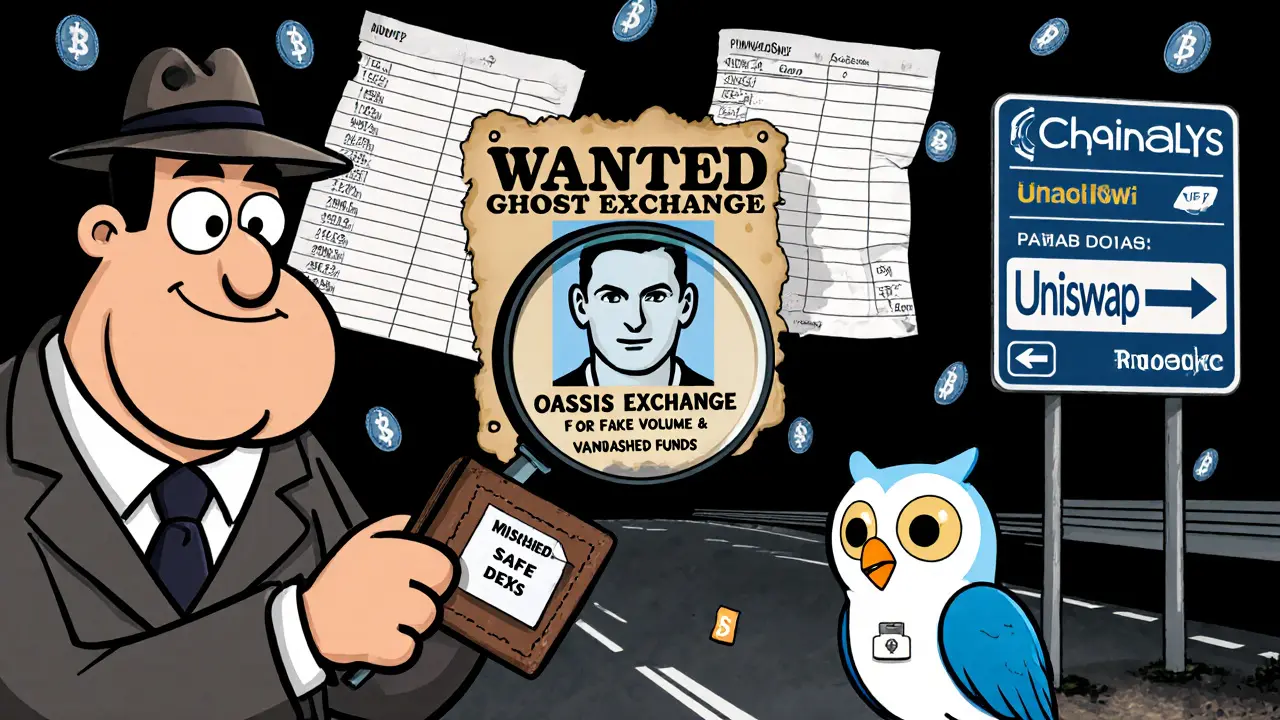
What Should You Use Instead?
If you want a decentralized exchange that actually works today, here are your real options:
- Uniswap (Ethereum) - Best for ERC-20 tokens, deep liquidity, trusted by millions
- PancakeSwap (BSC) - Lower fees, great for altcoins, huge user base
- SushiSwap - Similar to Uniswap but with staking rewards and governance
- YuzuSwap (Oasis Network) - If you specifically want to trade on the Oasis ecosystem
- Curve Finance - Best for stablecoin swaps with minimal slippage
These platforms have:
- Live, audited smart contracts
- Public transaction histories on Etherscan or BscScan
- Active Discord and Telegram communities
- Regular updates and bug fixes
Never trust a DEX that doesn’t show real-time on-chain volume. If CoinGecko or DeFi Llama doesn’t track it, don’t touch it.
Final Verdict: Avoid Oasis Exchange at All Costs
Oasis Exchange is not a risky platform. It’s a ghost. A digital tombstone. A warning sign.
It promised decentralization but delivered nothing but broken trades and vanished funds. It looked promising on paper because it copied the UI of real DEXs. But underneath? No code updates. No team. No future.
If you’re reading this in 2025 and someone still links you to OasisExchange.com - close the tab. Block it. Warn others. It’s not just outdated. It’s dangerous.
The crypto space is full of copycats and short-term schemes. Oasis Exchange is one of the clearest examples of how not to build a decentralized exchange. Learn from it. Use platforms that are alive, transparent, and actively maintained. Your funds will thank you.
Is Oasis Exchange still operational in 2025?
No, Oasis Exchange has not been operational since late 2021. Its domain expired in January 2022, its smart contracts are inactive, and no blockchain transactions have been recorded since October 2021. Major platforms like CoinMarketCap and DeFi Llama no longer track it.
Can I recover my funds from Oasis Exchange?
There is no official way to recover funds. The platform’s smart contracts are abandoned, and the company behind it has disappeared. Even if you still have your private keys, the backend infrastructure no longer responds to requests. Do not send any new funds to the site.
Is Oasis Network the same as Oasis Exchange?
No. Oasis Network is a live Layer 1 blockchain with its own token (ROSE) and an active DEX called YuzuSwap. Oasis Exchange was a defunct DEX with no connection to the network. Confusing the two is common - and dangerous.
Why did Oasis Exchange show high trading volumes if it was fake?
It likely used wash trading - bots buying and selling to itself to inflate volume. This is a common tactic used by fake exchanges to appear legitimate. Real volume is verified on-chain. Oasis Exchange’s volume never matched actual blockchain activity.
What are the safest decentralized exchanges to use today?
Uniswap, PancakeSwap, SushiSwap, and YuzuSwap (on Oasis Network) are all actively maintained with transparent on-chain data. Always check DeFi Llama or DappRadar for real-time volume and TVL before using any DEX.


